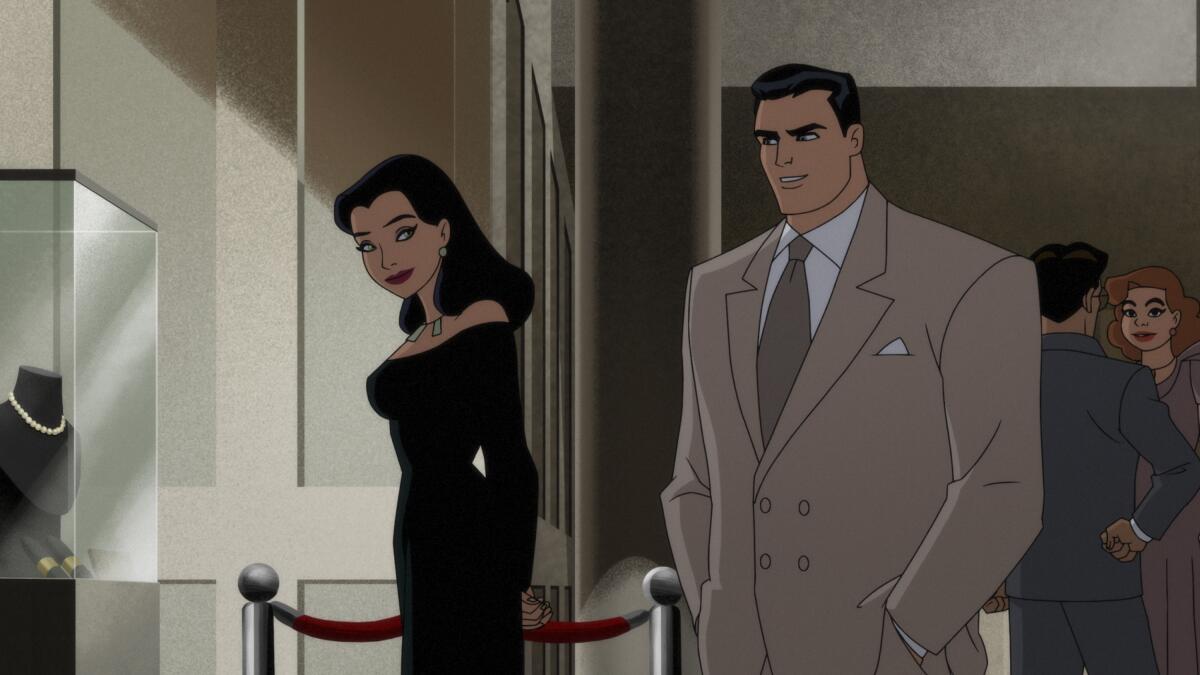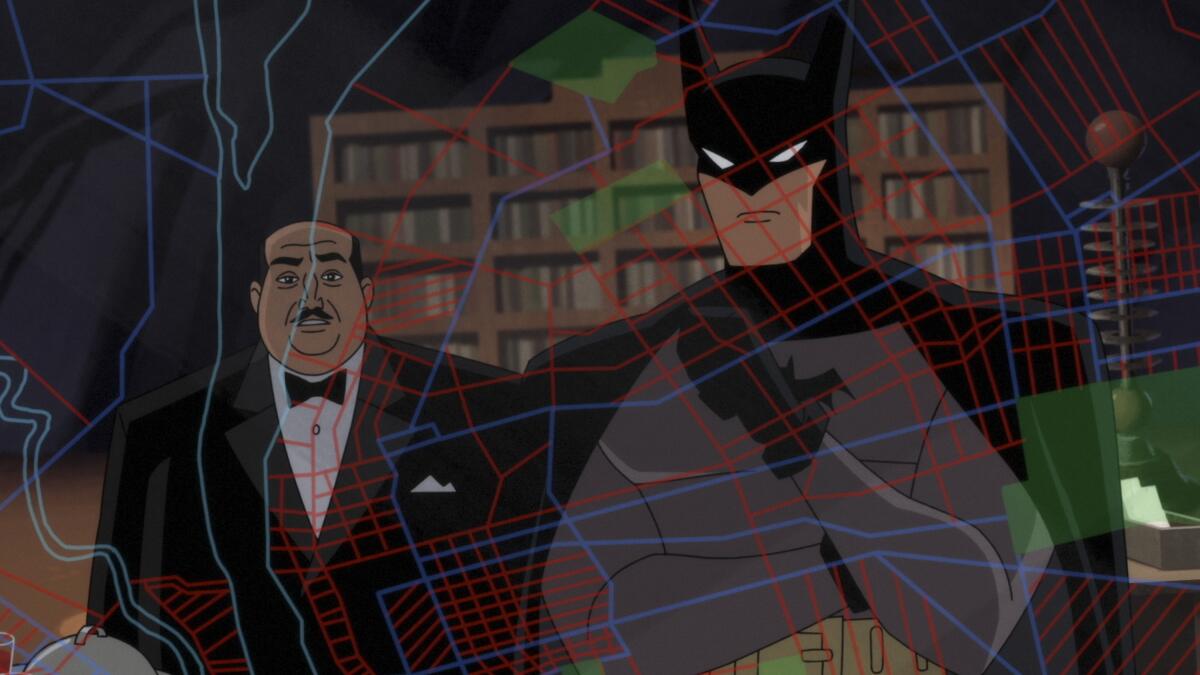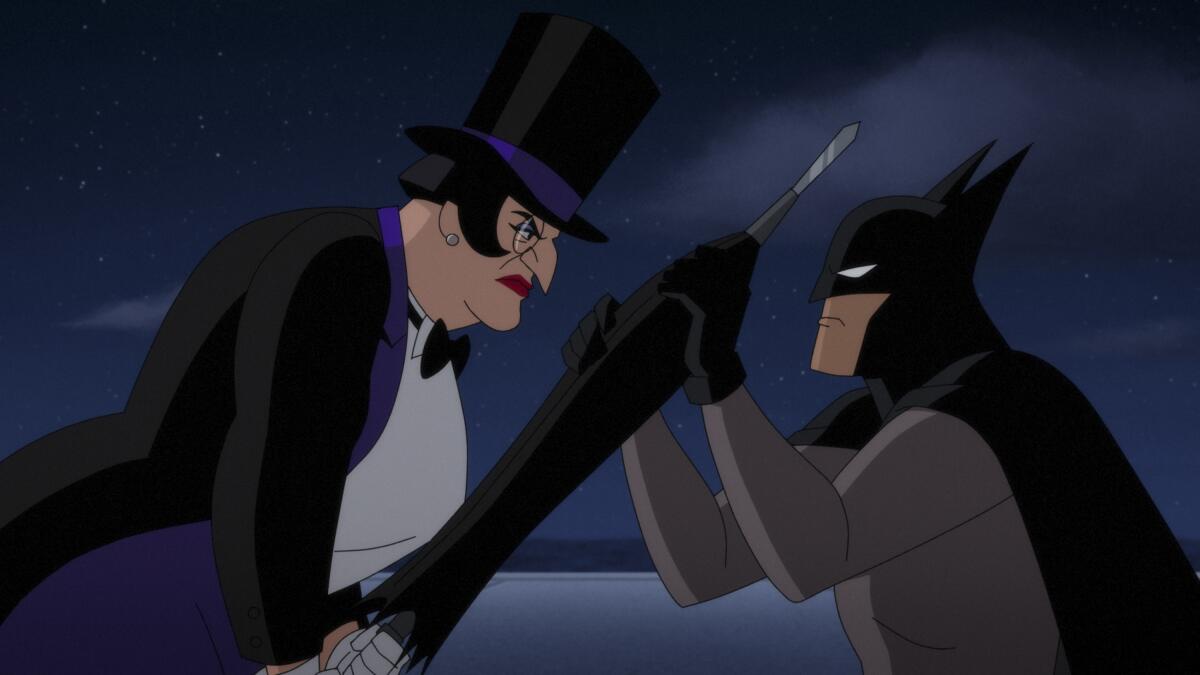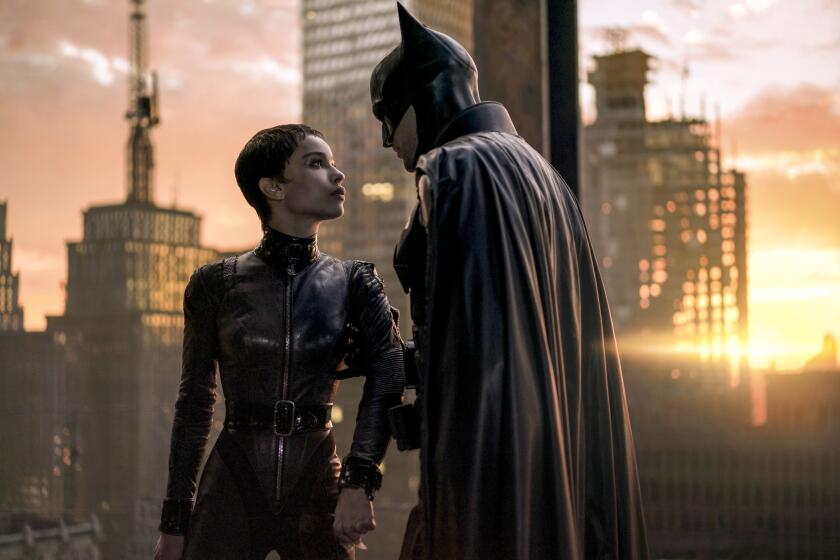‘Batman: Caped Crusader’ takes the vigilante detective back to his pulpy roots

There’s a new old Batman in town.
“Batman: Caped Crusader,” a cartoon series premiering Thursday on Prime Video, is not the first attempt to take the character back to his pulpy roots. But it’s unusual in that it also takes the setting back in time, to what I reckon is about a decade after his first appearance, in Detective Comics, in 1939.
There have been, while I have not been paying attention, a lot of Batman cartoon series released — this is the 10th to have the character’s name in the title — not counting 26 animated features. What with all the live-action movies (and more on the way), numerous tangential projects and, of course, the 1966 ABC television show (The Only “Batman” That Matters — to me), it might be the hardest-working IP in show business.
‘The Batman’ features new incarnations of classic Batman villains Catwoman, Penguin and the Riddler. Here is our definitive list of the best onscreen versions of them ever.
Over its long history there have been many approaches, seasoned to the tastes of the times, the retconning and rewriting and wholesale wiping out of history. Still, all Batman product may be broadly divided into two schools: what’s now called the “Bright Knight,” exemplified onscreen by Adam West in the 1966 TV show, and “The Dark Knight,” born in Frank Miller’s 1986 comic series, which set the tone for the character going forward, as the battle between dark and light became increasingly a war between the dark and the slightly less dark.

With its candy colors, canted camera angles and sound-effects balloons, the original series was witty, funny, parodic, satirical, deceptively smart and knowingly dumb and also a legitimate adventure story. It was every inch a product of the camp, Pop Artful 1960s but, like “Star Wars” a decade later, soaked through with nostalgia; gadgetry aside, it took its cues from B-grade crime films, old-time radio serials and the relatively straightforward costumed-heroes versus costumed-villains scenario of the early Batman comics.
Past the character’s traumatic origin story, which amounted to a mere 12 panels when it was offered to readers six months after his debut, and which was never mentioned in the TV show, there was no psychology to the Bright Knight, only a Boy Scout ideology. He wasn’t saddled with issues any deeper than his ambiguous relationship with Catwoman.
Developed by Bruce Timm, whose mid-’90s “Batman: The Animated Series” was also something of a throwback, featuring Batman and Robin in their classic gear and a chronologically indefinable mise-en-scene, “Batman: Caped Crusader” mixes the dark and the bright by going back to basics, when Batman (Hamish Linklater) was a simple vigilante detective regulating an unruly big city. It wraps its comic book tropes in a mantle of film noir, a genre where such distinctions were not always so clear. (Some episodes borrow their titles from pulp and detective novels, including Jim Thompson’s “The Killer Inside Me” and “Savage Night” and Nero Wolfe’s “And Be a Villain.”)
The images are rendered in muted tones of gray and brown, with touches of blue and rose, which paradoxically lightens the mood — the homage to old movies is both a distancing device and fun on the face of it. Set in the postwar era, it’s decorated with landlines and fedoras and ranch homes of recognizable vintage; Bruce Wayne has a microfiche reader in his lair and uses the public library when he needs to know more.
Batman — or “The Batman” as he’s called here, old-style — is pictured as Bob Kane first drew him, pre-Kevlar with tall pointy bat-ears sticking up from his cowl. He’s just getting started in Gotham City, a figure of mystery regarded as an outlaw, notwithstanding all the crime fighting and citizen-saving. There’s no Robin around, but Alfred (Jason Watkins) is on board and busy.

Though we are, in a sense, in the Golden Age of “Batman,” Timm mixes in characters from later eras with such all-time, old-time all-stars as the Penguin (Minnie Driver), here reconceived as female, and Catwoman (Christina Ricci). But we also get deep-cut villains like the Gentleman Ghost (Toby Stephens), Basil Karlo aka Clayface (Dan Donohue) and the vampiric Natalia Knight (Mckenna Grace), drawn more or less as Wednesday Addams. And there are also old-school mobsters, henchmen and thugs.
The brevity of the episodes, which finish their main business in around 24 minutes (a hair shorter than an episode of the ’60s series), keeps things tight and propulsive. There are some longer arcs. Dist. Atty. Harvey Dent (Diedrich Bader), running for mayor and taking money from unsavory sources to fund his campaign, is a presence throughout, with a well-known transformation in the offing. (To paraphrase the Shangri-Las, he’s good and bad but not entirely evil.) And there is the evolving womance of defense attorney Barbara Morgan (Krystal Joy Brown), daughter of police commissioner Jim Gordon (Eric Morgan Stuart); Det. Renee Montoya (Michelle C. Bonilla) and psychiatrist Dr. Harleen Quinzel (Jamie Chung), who will try to get Bruce Wayne to open up about his childhood trauma before she tries, as Harley Quinn, to kill Batman.
The action is well staged, though less conversational scenes are no more fluid than “The Flintstones;” but the design is attractive, and there are nice painterly background effects here and there. An extended chase in the fog is cinematically suspenseful, even as it manages some meaningful characterization. The scripts are smart and animate what the animation doesn’t, and the whole production is more enjoyable than I would have imagined when I sat down to watch. It may be a cartoon, but cartoons are, after all, one dimension closer to the comics — which is how this whole thing started.
More to Read
The complete guide to home viewing
Get Screen Gab for everything about the TV shows and streaming movies everyone’s talking about.
You may occasionally receive promotional content from the Los Angeles Times.








